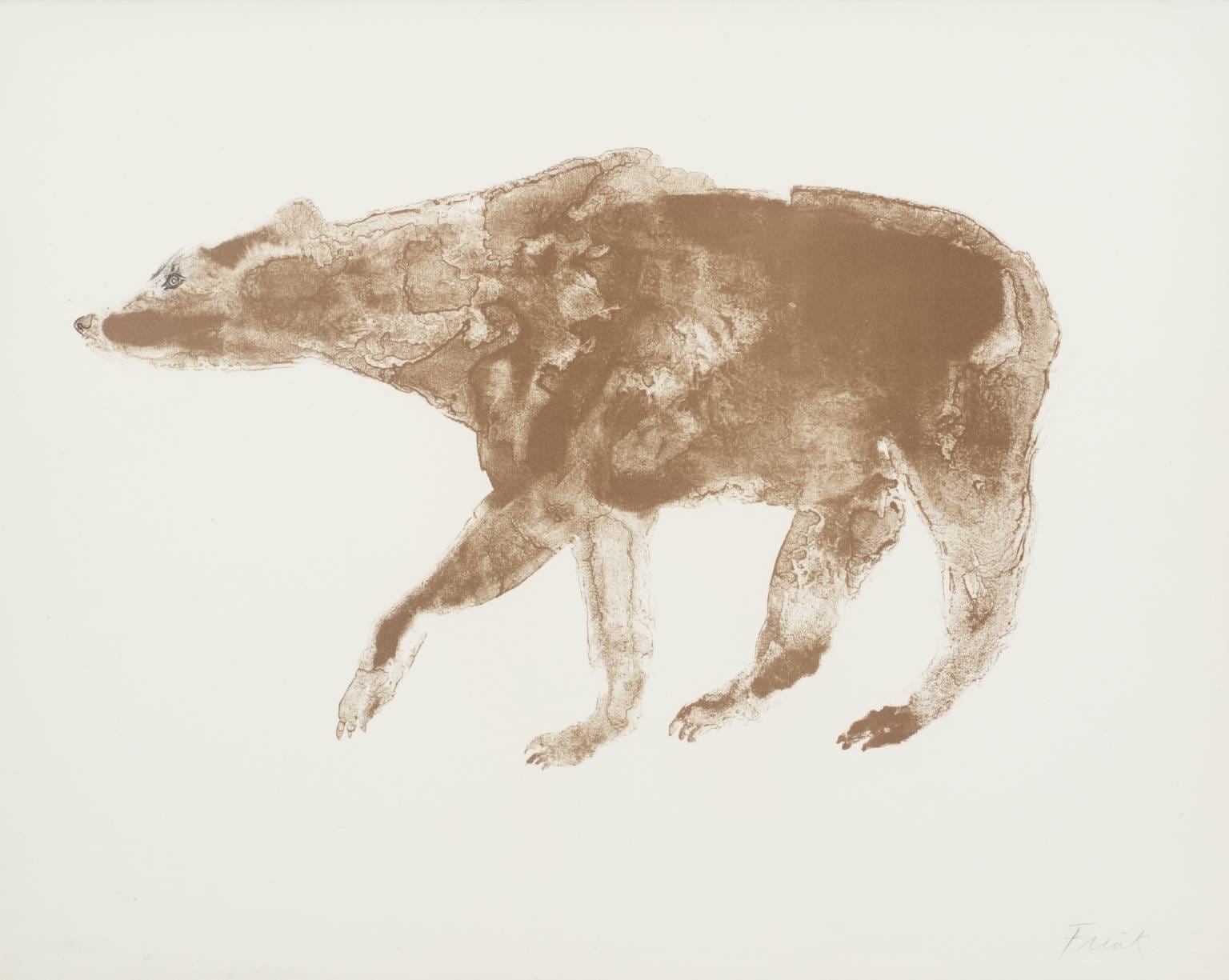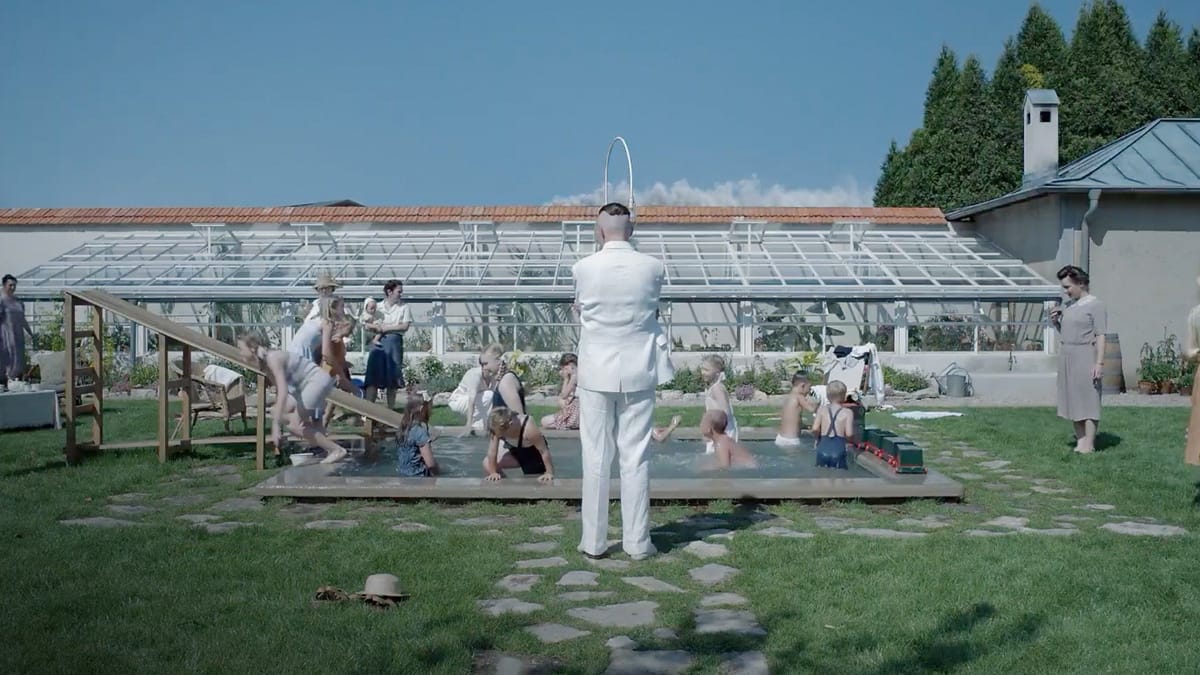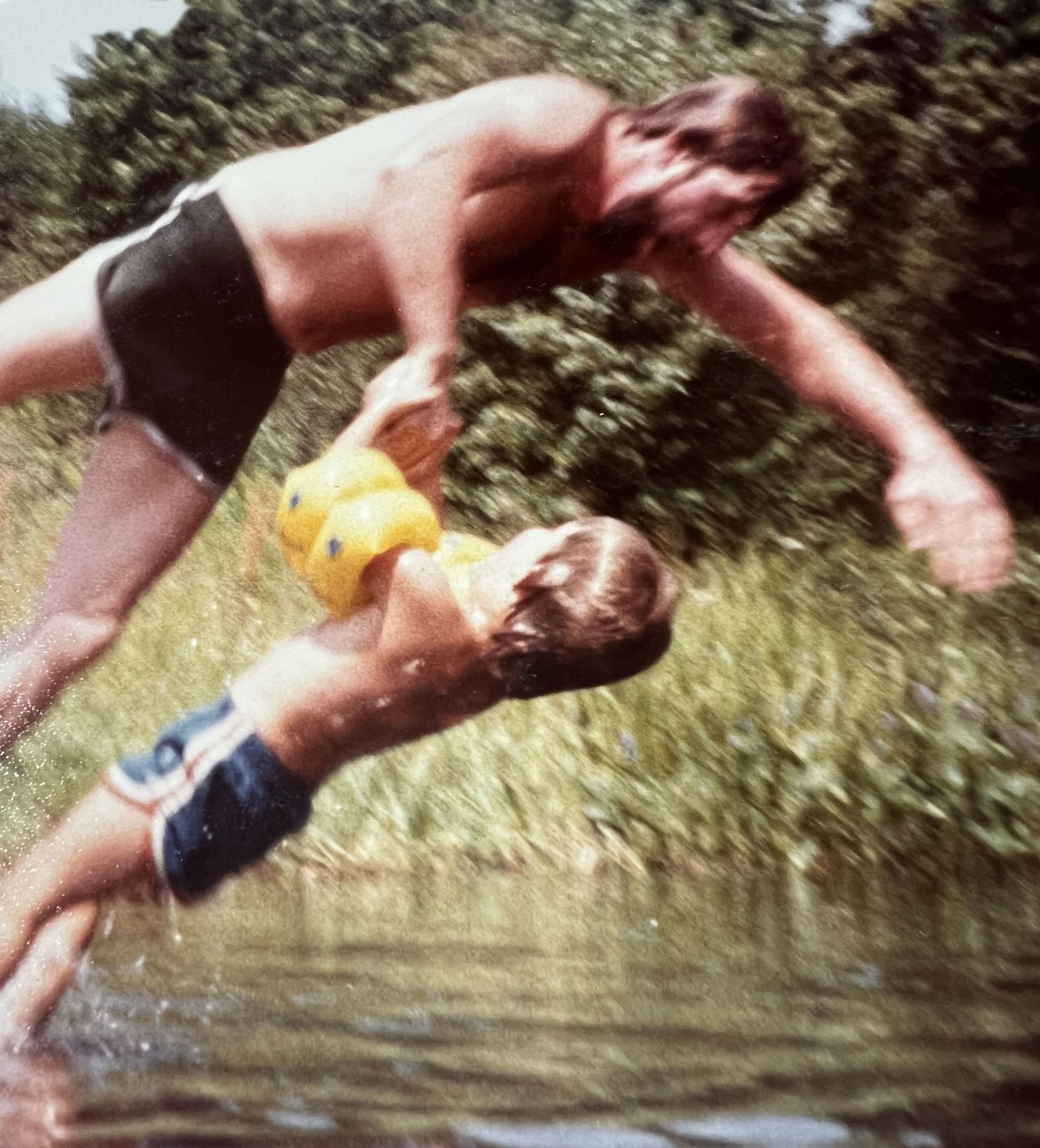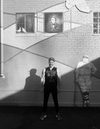The shine had worn off

I've had this confusing feeling for the past day or two. Am I actually gassing myself up with excitement over the idea of Kamala Harris stepping in for Biden? That can't be right.
Then a couple hours ago I realized what I was actually experiencing was a moment of hope that the Democrats might actually take drastic measures to do something outside of How Things Are Typically Done for once in my fucking life. Imagine that? Trying their damndest to win power and then wield that power instead of losing by the rulebook. What a high!
Of course they will most likely stay the course but isn't it nice to dream?
Let me just check the latest real quick before we move on.

Nevertheless,,,
Abruptly switching gears here now to talk about something else besides the fallout from the Biden/Trump debate that everyone is also fucking sick of hearing takes on: FX's hit TV series The Bear! Corey Atad returns with a great essay about the series that touches on The Prisoner, Breaking Bad, Twin Peaks, and the medium of television as an art form.
Previously Atad wrote for Hell World about the reception to The Zone of Interest director Jonathan Glazer's Oscars speech and the history of political protest at the awards ceremony.

After that for paid Hell World subscribers my most recent Flaming Hydra piece about death and nice family summers in Maine.
Please do chip in to help me pay my writers well. It means a lot. There's no work out there for anyone anymore!
I quite like The Bear personally although I think it's dipped a little from what I've seen so far this season. Either way this video is hilarious.
the bear video game actually looks pretty cool pic.twitter.com/pijrftMFDr
— Michael Kandel (@K_A_N_D_E_L) June 28, 2024
Alright here's Corey. Have a nice holiday if you can. Independence Day. What a concept!

As the season wears on
by Corey Atad
I sometimes try to place myself in the headspace of someone in 1967, turning on my television set and seeing The Prisoner for the first time. In its opening sequence, creator and star Patrick McGoohan angrily resigns his spy agency job and then wakes up to find himself in the mysterious Village. He’s given a number—Number Six—and meets a shadowy figure known as Number Two asking for “information,” all while the secret agent man is chased by a giant white balloon. The strangeness of the series never lets up for a moment, as Number Six attempts over and over to escape his picturesque prison. By the time of its finale, McGoohan allowed it to descend deep into surreality, to controversial effect. When my father first introduced The Prisoner to me as a young teenager, after seeing me watching a Simpsons parody, I remember having my hair blown back. I’d never seen television like it before. And then I imagined the reaction from a viewer at the time, who would have been even less prepared.
Television had been up to plenty of interesting things in the preceding years. From the live teleplays of the 1950s Golden Age—Chayefsky’s Marty; Serling’s Requiem for a Heavyweight; Frankenheimer’s Days of Wine and Roses—to the sci-fi-inflected anthologies of the 1960s—The Twilight Zone, The Outer Limits—television had been finding ways to prove itself as a medium worthy of serious consideration, a medium of art. Coming off a four season stint on British spy thriller series Danger Man, McGoohan used his clout to make perhaps the grandest statement to that point about the value and possibilities of TV. Beyond the visuals and audio, both of which are top tier in The Prisoner, what McGoohan understood most of all was the power of TV as an episodic form. He leveraged the need at the time for each episode of a series to reset. Before the age of DVDs or streaming one could not expect a viewer to have seen any episode of a show before, let alone its setup. So each episode of The Prisoner begins with the same extended opening, introducing the character, setting and premise, and each episode has Number Six on some sort of escape mission, often bending genre a la Star Trek. That episodic structure, the constant need to clear the board, also provided the space for the show’s idiosyncratic impulses to thrive. What did it matter how legible a given episode was, or how weird and psychedelic, when by the next one the situation would have been back at square one? Where other shows of the period were content to offer simple, reliable comfort, McGoohan realized the structure and rhythm of the medium itself, which helped to moor an audience with a consistent set of expectations each time they turned on the tube, could also be exploited for its Kafkaesque quality. Which he did, taking viewers in any and every possible direction right up to its head-scrambling finale broadcast in 1968.
The Prisoner, perhaps not as well known as it should be next to the likes of I Love Lucy or Bewitched, remains in some ways the gold standard for boundary-pushing television. There is no Twin Peaks without The Prisoner. No Lost, or The X-Files, or Westworld, not even The Sopranos, or Mad Men. What McGoohan had done was break the medium right open by recognizing the power of its unique qualities and limitations, gifting to future creators a sense of unending possibility. It’s a matter of trust. Trusting in television and what it can do.
Late last month, the third season of The Bear dropped all of its ten episodes in one day for excited viewers’ binging pleasure. Early positive reviews soon gave way to a response of general dissatisfaction. The show was still basically good, but something was off. The shine had worn. The season premiere gets things off to a particularly poor start. Constructed as one very long, wistful flashback montage, it’s a television experiment that may deserve kudos for trying, but whose effect is numbing and whose affect is annoyingly pompous. I saw more than one person on Twitter make the joke “Carmy has to think about his entire life before he cooks.”
As the season wears on, with its lead character inexplicably having fallen into a worse, more maniacal headspace than he was at the series introduction, that numbing feeling never fully lets up. Brief moments of quiet reflection and conversation, as in a wonderful scene in Tina’s big flashback episode between her and Carmy’s late brother Mikey Berzatto, suggest a better path for the show. The Bear, about life running a restaurant, has from the start been defined by its ability to accurately convey, through cinematic technique, the stress of working in such a notoriously high-pressure environment. Creative use of close-ups, fast editing, music, and a good deal of yelling earned it comparisons to Uncut Gems. That no doubt flattered its creator, Christopher Storer, who surely aspires to cinematic excellence. But in that third season episode centering on Tina, titled Napkins, it’s another creative impulse that takes over, in which a simple conversation between two people is allowed to play out at the speed of real life. A full ten minutes in which a pair of characters meet and share an actual moment of bonding, its predetermined outcome (we already know Mikey is going to offer Tina a job) made natural and so moving. One could imagine such a scene in an independent movie, but on television, with the aid of multiple episodes and extended running times, it’s ten minutes easily given, and the show takes full advantage.
Where season 3 of The Bear has gone wrong for many is related to a critique I’ve had from the start: it’s too in love with its own filmmaking. In the prestige era, where TV shows look and sound ever more like cinema—effectively killing the adult drama at the multiplex—filmmaking has become an end to itself. The worst show I watched last year (not necessarily the worst show on TV, I simply haven’t watched enough) was A Murder at the End of the World, Brit Marling and Zac Batmanglij’s mystery series follow-up to The OA. It’s a piss-poor mystery first and foremost, but laid thick with capital C cinema, which mostly means a lot of slow shots of not very much that go on for minutes at a time. As though being slow would make it good. The Bear takes the opposite approach formally. A lot happens, fast and often loudly. In fact, its first season, when you break it down, basically follows the structures of a workplace comedy, right down to a silly sequence in which Carmy accidentally spikes the drinks at a kids birthday party with Xanax, putting them all to sleep. You might sooner expect such shenanigans in an episode of Parks and Recreation.
Still, The Bear suffers from a similar affliction as A Murder at the End of the World, if less disastrously. In its second season, Storer and his team pushed the filmmaking further, culminating in the bravura flashback episode Fishes, set at the dysfunctional Berzatto family’s annual Feast of the Seven Fishes. It’s an hour of almost non-stop stress, even worse than the restaurant kitchen, and it’s easy to see why people would be impressed. It’s certainly impressing upon the viewer. Personally, I found it tiring, like watching a musician play the same garish chord over and over, its cinematic technique mere pyrotechnics.
As critics and fans on social media began issuing their complaints about The Bear’s latest season, I thought back to Breaking Bad, another show that was often noted for its directorial flare. It would be instructive for those critics to go back and watch Breaking Bad again. Creator Vince Gilligan, a veteran of The X-Files (another often expertly directed show), made adventurous filmmaking a cornerstone of the series, even bringing on Looper director Rian Johnson to direct two of its most cinematic episodes. But a cornerstone is one thing, and a foundation is another. Breaking Bad, true to its creator’s staunch “TV” roots, was built first and foremost on structure, using its weekly serialization to its advantage like no other show before it. Famously made up as it went along, the show operated on very simple television logic: set up a dilemma for its protagonists and then watch them get out of it. The show did that both within each standalone episode, across the arcs of each season, and the series as a whole. Its ultimate outcome, announced well in advance as the story of Mr. Chips becoming Scarface, served as mere compass for its tense, “what’s going to happen next?” storytelling, a mode dating back further even than the advent of television or radio or even books. It was within that tight dedication to TV as a delivery for episodic serialization that Gilligan allowed his directors to let loose, to push the visuals and editing, and most of all to have fun.
There’s a concept in the field of aesthetics known as medium specificity. It refers to the idea, in basic terms, that each form of art finds its greatest power in the artist’s ability to wield and manipulate the aspects unique or specific to its particular medium. Given that it’s comprised of moving images and sound, television features many of the characteristics of cinema, but as such, those are not the characteristics that make it unique. If all a show ever does is display great directing prowess, it may be good, but it will not have fulfilled the potential TV provides. Series frequently cited as the greatest of all time (Breaking Bad, Mad Men, The Wire, The Sopranos, Twin Peaks, The Simpsons, Miami Vice, Columbo, The Mary Tyler Moore Show, Star Trek, The Twilight Zone, The Prisoner, and on and on) are often those that at their core have a deep respect for the medium of television, harnessing its particular attributes even as they worked to elevate it.
Mad Men was certainly a good looking show, with great production design and very good direction, but creator Matthew Weiner came out of Becker and The Sopranos, and he valued the lessons of each, bringing the rhythms of a workplace sitcom to the world of high-end serialized TV at the height of the Difficult Man era. Similarly, The Sopranos creator David Chase cut his teeth on Kolchak: The Night Stalker, The Rockford Files and Northern Exposure, and for all that felt new about his mobster series, one need only look back at those older shows to see the roots of its episodic structures and character-based world building. Even Twin Peaks, famous for the surrealism of director David Lynch, was given its shape by co-creator Mark Frost, who had done a long stint on Hill Street Blues, along with The Equalizer, The Six Million Dollar Man and classic network shows. In all these cases, for as much as the shows broke new ground and forged new avenues for the future of television, they were grounded in a respect for their medium and its particular affinities as a long-form, episodic storytelling delivered week-to-week in the comfortable space of the viewer’s own home.
I wonder how much respect Storer has for television. He’s worked on TV shows, having been an executive producer on Ramy, and written episodes of Dickinson, but he comes out of the world of esoteric comedy specials, having worked for years with Bo Burnham. His instincts seem to pull him toward the cinema of it all, as though merely being good television is not respectable enough. Episodes are larded with so much directorial flash it suggests the underlying drama maybe doesn’t have enough juice on its own.
Despite my skepticism, I think I may have more faith in the show’s underlying potential than even its creator. In The Bear’s best moments, Storer (and his writers and directors) marries great filmmaking with the great traditions of modern TV. My favorite episode of the show is the one that comes after season 2’s bombastic Fishes. In the episode, titled Forks, Carmy’s friend and restaurant manager Richie is sent to work for a week at a fine dining establishment. Believing he’s been sent there as punishment, Richie eventually discovers the value and dignity of delivering service at a high level. A show taking an episode to center a single character in its ensemble is nothing new, and neither is the arc the episode takes, and that’s why it works. Like the best works of genre, the episode uses well worn elements—tropes even—and contextualizes them within a wider tapestry of specific character and specific setting, fitted into a longer serialized story, bolstered by lovely filmmaking that flits between comic, stressful, thrilling, and serene. It’s pure television, which is to say, great art.
Corey Atad is a freelancer writer living in Toronto

Round Pond, Maine
The first thought is dad sprinting back and forth across 95 somewhere north of Boston. Like an old tabletop video game. Salvaging as many items of our wind-strewn clothing as he could. One of those tubes they make you stand in and the air blows the cash around. He must not have secured the suitcases well enough to the roof of the station wagon. Mitt Romney with a dog. Ours was safely inside though. An Irish setter named Arlo crouching in the backseat panting and staring dumbly at things he didn’t understand and didn’t need to anyway.
It doesn’t seem worth it to me now. Risking all of that. But I’ve never had to pay to clothe children. Especially ones that aren’t technically my own.

My mother’s family had been coming summers to stay at a defunct cove-side motel in this no stoplight town since they were children. Then at a small house of their very own. Next door to one church and across the street from another. Imagine New England on a postcard. The one hundred year old general store. Lobster traps everywhere even on land. Fried clams and ice cream and cold sadness like the water a few inches beneath the parts the sun reaches.
OK now imagine it all slightly poorer than what you were thinking. Just a town. A town in Maine. Sunburnt men in overalls who knew how to do things and then died early for having done them.
Over the years my grandmother took to decorating the house like a musty drawing room in a gothic romance. Velvet and lace and burgundy. A purposeful dimness to it. Miss Havisham’s cake. A vampire with a rusting lobster boat he kept meaning to take out on a cloudy day.
She’d go on to live out the rest of her days there mostly alone. Not the full rest of her days but the rest of them before the last of them. Cobwebs everywhere. A tiny bathroom my dad built under the stairs that he also built. No flushing allowed unless it was absolutely necessary. The thick beams of the roof jagged with nails older than all of us pushing outward at impossible angles like gnarled claws. I worried when I was young what would happen if everything tipped upside down.
Probably it was all beautiful once. Before I understood anything. Maybe I’m just remembering it in disrepair. The opposite of rose-colored glasses.
Subscribe to read the rest.
